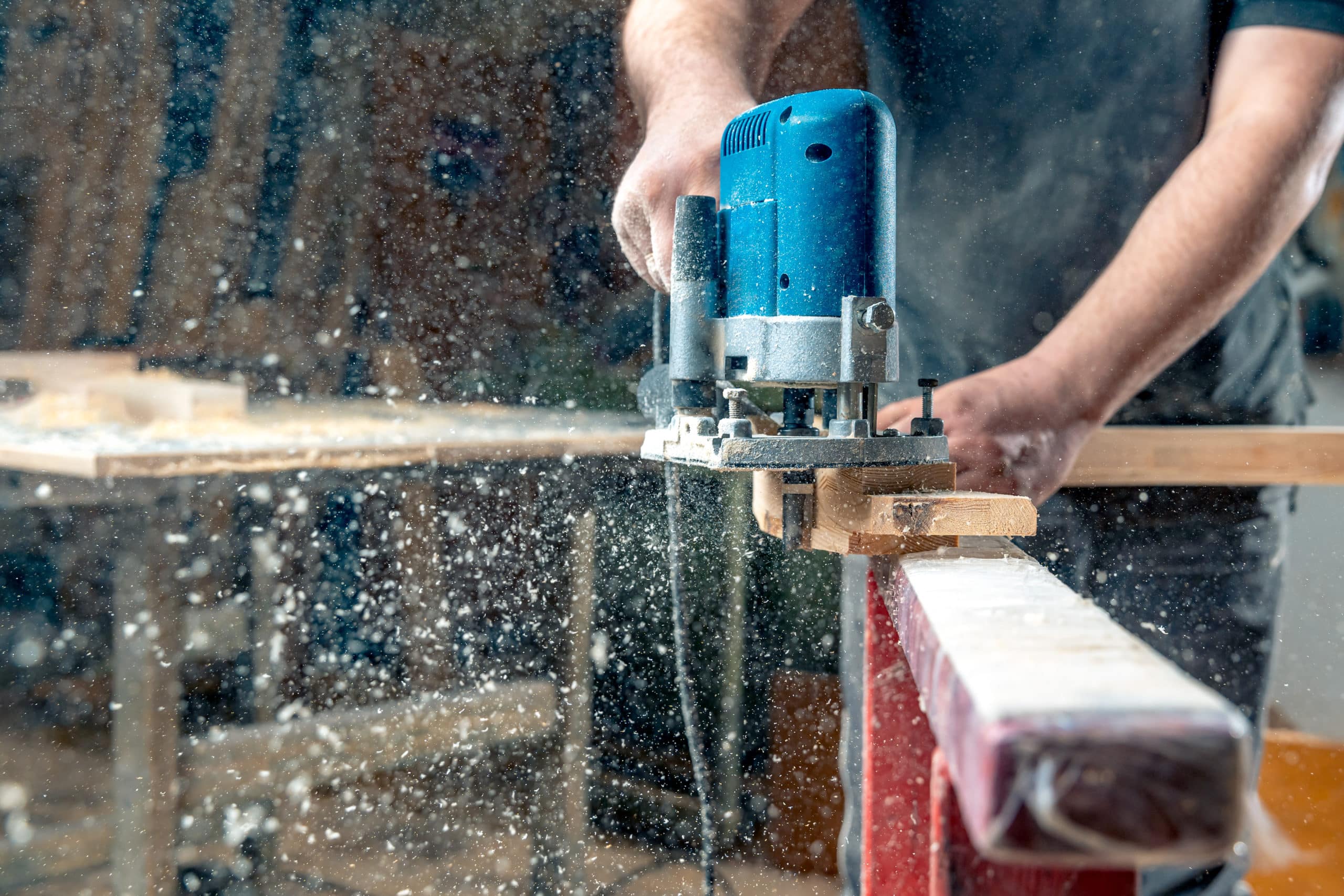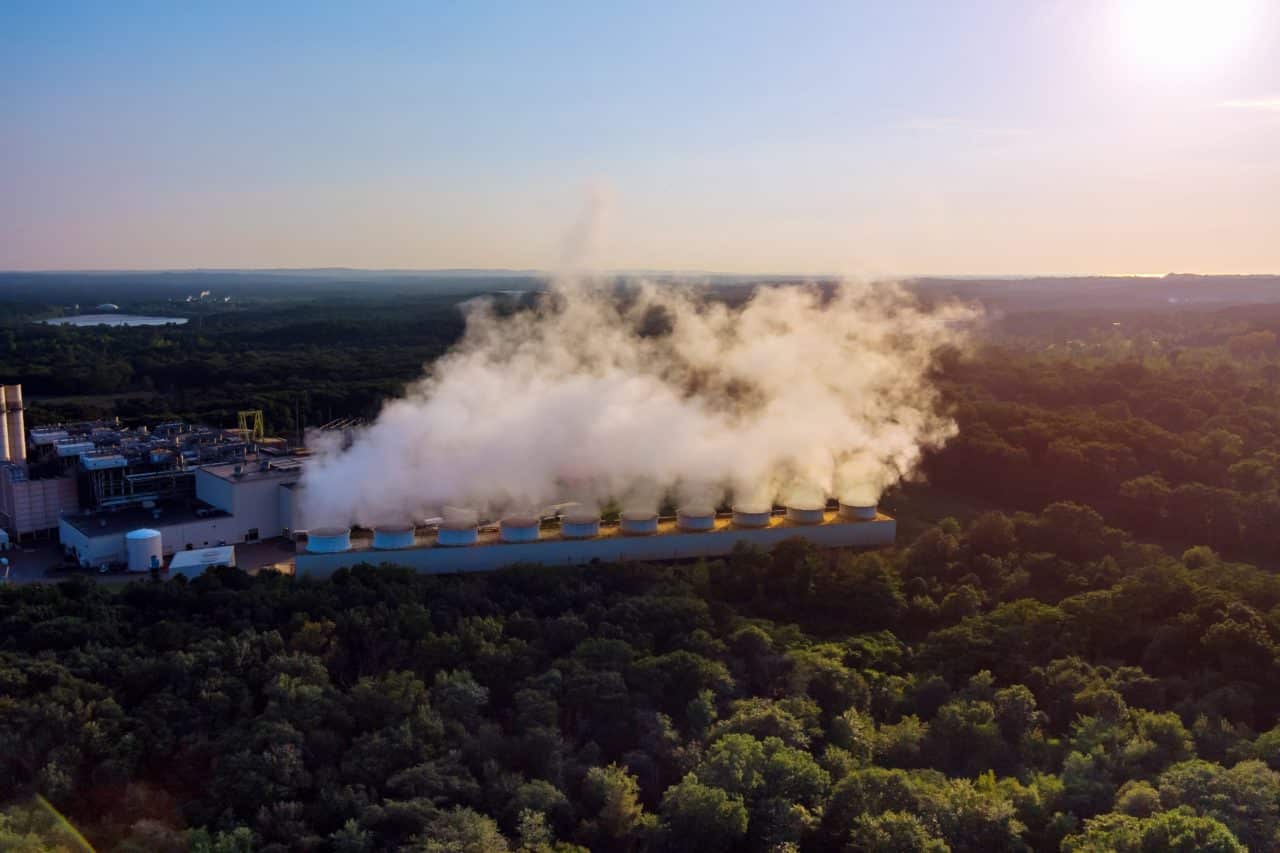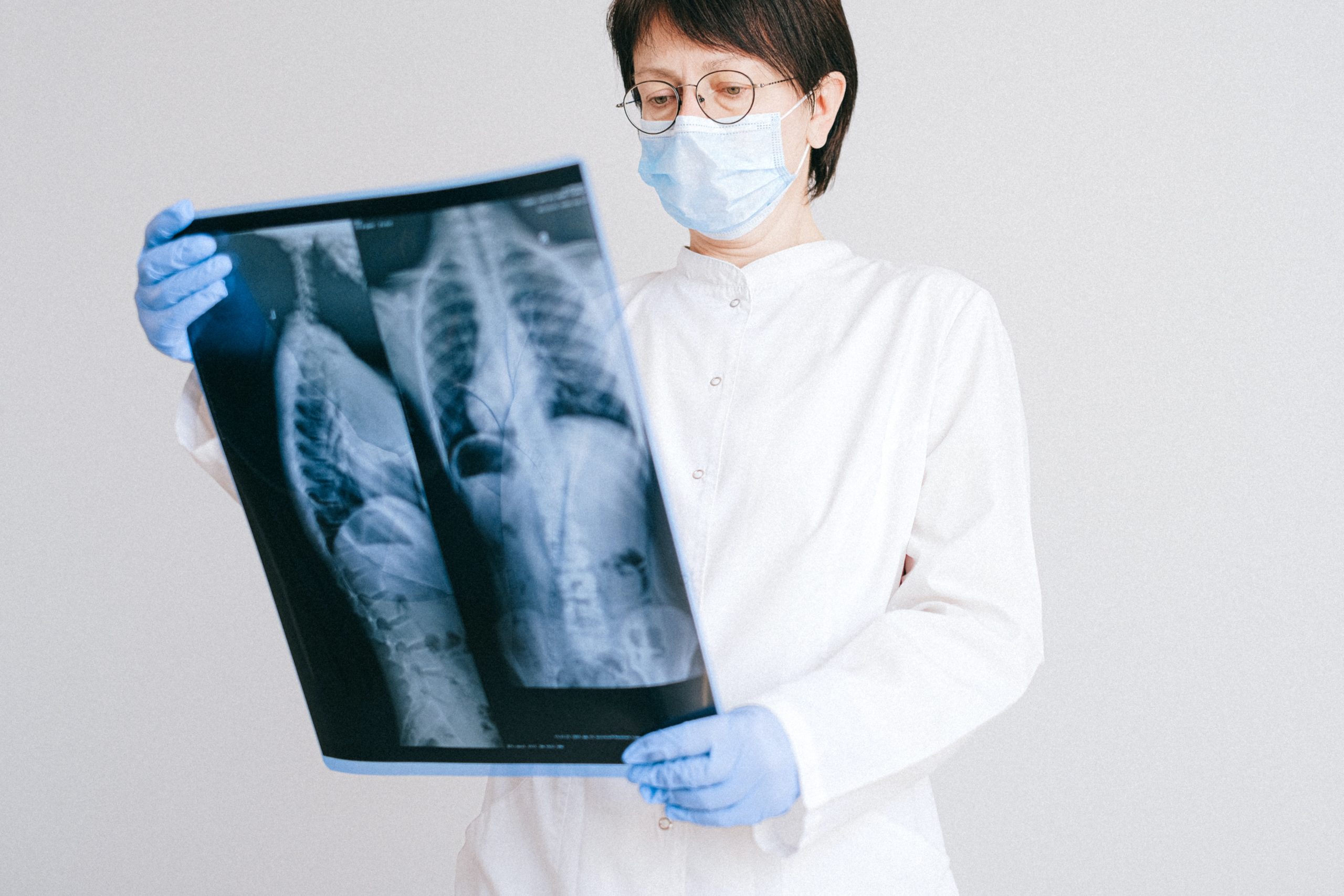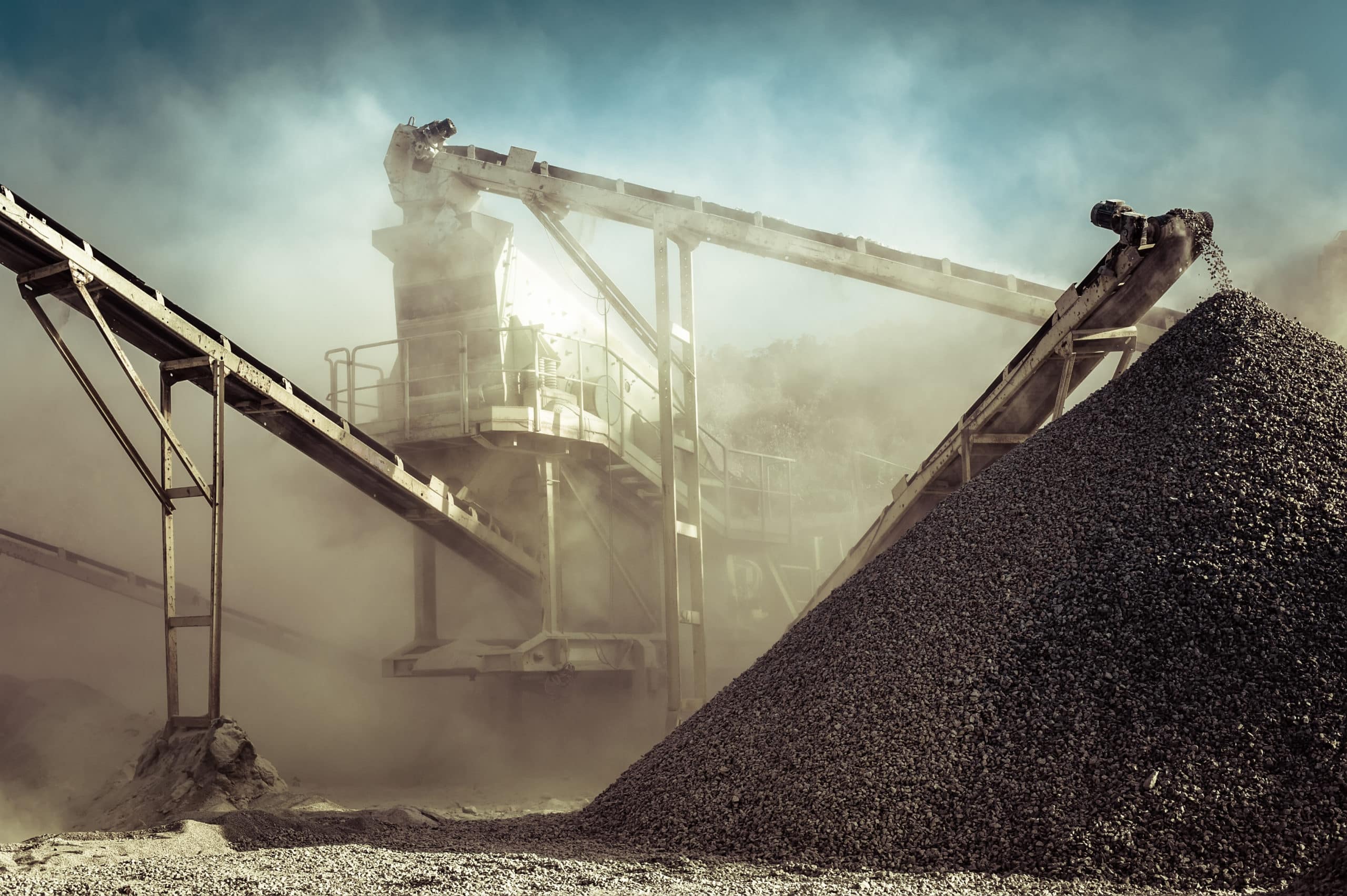
Research released from the World Health Organisation shows that air pollution in the workplace is an issue across the globe.
While pioneering dust monitoring systems are being introduced in more workplaces than ever, it’s important that employees themselves champion clean air and revolutionary technology, and this starts with understanding dust monitoring and why we need it…

Being aware of the risks at work can help bring about much needed change in many industries. Experts are calling for air pollution to become identified as a separate risk factor in the workplace, so more can be done with particle monitoring and reduce the chance of premature illness for workers.
Every employee should be able to work in a place where the health and safety risks are properly controlled by an employer. However, it can be daunting not knowing where to start when attempting to challenge old workplace habits.
It helps for employees to educate themselves on how to implement this in their work environment, whether it be in mining, construction or other heavy process industries. This helps tackle air pollution in the workplace, as well as other hazards you might face.
Here are some important need-to-know facts and information for employees who want to reduce their risk of being exposed to air pollution and harmful substances in the workplace.
Where possible, encourage employers to switch to renewable sources of energy. This naturally brings down the levels of particulates in the air, making for a cleaner environment and lowering air pollution in the workplace.
Revolutionary safety technology and real-time dust monitors can reduce risks in even the most polluted work environments. Create safety systems that are unique to your business and the risks from air pollution in the workplace drop significantly. Combined with the right RPE, you’ll be better protected from harmful dusts.
Don’t neglect dust monitoring in outdoor areas. Airborne particulates can be found within a 300-metre radius on construction sites which, when inhaled, can damage your lungs and have long-term health implications.
It’s not just manual labour workers who breathe in particulates and need their workspace monitored. Office workers and other administrative staff who work on or near the site can be breathing in the same harmful air, even from cabins and other portable offices. Dust monitoring systems can help here, too.
Even when risks appear minimal, it’s all about control. Implementing strategies means your workforce can be aware of any potential dangers and then act on them accordingly. Outline the processes to follow and RPE/PPE to use for each situation.
Around 12,000 deaths every year in the UK alone (according to HSE) are linked to exposure to damaging substances, such as silica dust, at work. It’s only by addressing these issues that risks can be minimised and air pollution in the workplace mitigated.
The good news is there are now fewer employers that don’t implement strategies in the workplace where there are increased risks, but there is always more that can be done and particulate monitoring is a big step forward in this area.
With so much awareness being raised about the damaging effects of air pollution in the workplace – and in general – companies are wising up to the risks. This means more employees can benefit from a healthier and cleaner work environment, and it’s never too late to learn.
Find out about how Trolex real-time dust monitors, like the Air X Dust Monitor and the XD One Personal Dust Monitor, can help you monitor particulate levels and create a safer working environment. Get in touch with the team using the contact form below to learn more.

It’s no secret there are different health and safety concerns for the industrial sector than most others. One of the most prevalent to arise in recent times is about silica dust exposure, and what this means for those working in areas with this risk.
The nature of the work being done, and the environments it’s done in, have highlighted plenty of areas that need to be improved on – not only for the business as a whole but for the benefit of employees, without whom the industry would grind to a halt.
Why is silica dust exposure important, and what can be done to protect those at risk?
The first thing to know is silica dust exposure is not a new thing. It’s been happening for a long time, but as industrial processes and technology have improved over the years, we’ve been able to learn more about it. Knowing what it is, where it comes from and, more importantly, what the effects of it are allow us to make changes to help everyone.
Silica, also known as quartz, is a natural substance found all around the world. Sand, gravel, clay and some rocks and stones all include silica. While a material in its own right, it’s also a part of many common building materials like concrete, mortar, bricks and tiles. It’s not unusual for any building or construction site to work with silica dust.
That’s right, even your home is made with some silica.
Whenever silica is present, there’s a risk of silica dust exposure. Industrial workplaces and construction sites are just a couple of examples of places where the risk of inhaling silica dust is high.
Grinding, drilling, cutting and similar tasks releases dust into the air. Depending on the material, this can be mostly harmless or, in the case of silica, dangerous.
Silica dust, or respirable crystalline silica (RCS), is so fine that it can reach deep into the lungs when inhaled. If this happens often enough over a long period of time, it can lead to serious respiratory illnesses or even lung cancer.
Silicosis is a serious respiratory illness caused by silica dust exposure over a long time. The longer someone is exposed to silica dust, the worse the symptoms of silicosis will become. Despite this, if exposed to extremely high levels of silica dust over a shorter period, acute silicosis can develop quickly, so you need to be aware of the risk.
According to the CITB, about 3,000 construction workers suffer from lung and breathing problems from their work each year. Not only is this bad for businesses, but worse for workers. In 2005, the HSE estimated silica dust exposure was responsible for more than 500 construction workers deaths.
The symptoms of silicosis can include a persistent cough, shortness of breath, exhaustion and more. Depending on the severity of silica dust exposure, and for how long, the symptoms can appear very quickly or over a much longer period of time.
After years of exposure, these symptoms will worsen and could lead to respiratory failure. This can often be fatal.
Right now, silicosis can’t be cured. The lung damage is irreversible, but it can be managed – especially if caught early. If you’re at risk of silica dust exposure and notice these symptoms, it’s essential to go for a check-up to be safe.
While silicosis is a serious condition, and silica dust exposure is a real hazard, there are ways to reduce the risk of inhaling the substance.
We’ve outlined five methods that increase the protection of workers in high risk areas involving silica dust – and these will also work with other hazardous airborne particulates, too.
One of the most effective ways of minimising silica dust exposure is to provide your workers with personal protective equipment (PPE), such as respirators, which cover the nose and mouth.
Disposable respirators only give minimal protection and need to be changed regularly, so you’ll need to assess the working environment to decide if they can adequately protect your workers from silica dust inhalation – and whether this is a cost-effective solution.
For even more hazardous environments, half or full-face respirators offer a better degree of protection – but they must be cleaned after every use.
Contamination can be a major cause of concern in these environments. Workwear can be contaminated by silica dust – which is sometimes so fine that it cannot be seen. Even if something looks clean, it should always be washed separately to avoid the risk of contamination and to remove any invisible silica dust particles.
There are specialist laundries that offer industrial cleaning services to reduce the risk further. Additionally, any equipment used in areas with silica dust should be thoroughly cleaned after each use and stored in a dust-free place.
Refer back to the manual of each piece of equipment for specific cleaning and maintenance details, but some general tips for cleaning dusty equipment include:
With local exhaust ventilation (LEV), you can remove dust at its point of origin. This is a very effective form of dust suppression, as silica dust containment systems continuously remove and filter the contaminated air.
There are a number of brands and devices out there to handle different levels of dust particles and environments. These range from built-in ventilation systems to portable fans and blowers that can be placed strategically in an area.
Before carrying out a task that produces a lot of dust, such as cutting or drilling, you can spray water on the material and area. This is known as the wet method, and suppresses dust particles being expelled into the air as they’re trapped by the moisture.
Regular water works for this, and all you need is a spray bottle. A few sprays of the water onto the material will drastically reduce dust particles in the air.
This is a useful method for reducing silica dust exposure, but it’s not perfect. Even when using the wet method, dust monitoring and respiratory protective equipment should be utilised.
A dust monitor can assess the air quality in the workplace, whilst also measuring the size and concentration of any airborne particles, such as silica dust. This is one of the best preventative measures you can take to help reduce the risk of silicosis, as constantly monitoring the air in real time allows you to easily spot any areas of concern.
Most dust monitors can only measure one particle size at a time, but the AIR XD Dust Monitor, XD One Portable Dust Monitor, XD1+ Personal Dust Monitor and AIR XS Silica Monitor uses advanced laser technology to monitor multiple sizes at once, adding an extra level of protection against both silica dust exposure and silicosis.
We can’t state enough just how much of a hazard silica dust exposure is – to both businesses and workers. Anything that can be done, such as the steps above, helps ensure the well-being of the workers most at risk. The more steps you take, the better the conditions and lower the chance of developing silicosis.
Reducing silica exposure in the workplace requires commitment, but if you’re interested in finding out how to protect your workers against the dangers of silica inhalation and reduce the risk of silicosis in your workplace, get in touch using the contact form below.

As employers, we have a responsibility to make sure our people are protected at work. This includes dust monitoring, as some particles can be harmful to a worker’s health.
The World Health Organisation (WHO) estimates that around 7 million people die every year from exposure to fine particles, leading to the inhalation of hazardous particulate matter, such as silica dust. As decision makers and employers, we can work to significantly reduce this number.
How? By employing modern safety technology for dust monitoring.
Effective particulate monitoring procedures and units can help us to protect not only the lives of our people, but the financial future of our businesses. We’re going to explain the fundamentals of dust monitoring and particulate matter.
Here’s a basic introduction to some common language around particulate matter and dust monitoring. These terms are what you’ll find across the industries and workplaces dealing with dust monitoring.
You can find a longer glossary of technology types, Air XD-specific terms, diseases and legislation in our Jargon Buster.
For now, the basics; size measurements in particulate monitoring:
Simply, dust monitoring is detecting and assessing the particulate matter (or PM) in the air. This particulate matter is a mix of liquid droplets and solid particles in the air, which is monitored by concentration and size. Once known, controls can be implemented to reduce the risk of inhalation before severe consequences arise.
Each work environment is different, so there are various options on safety technologies for particular monitoring. They provide different levels of accuracy and depth, so there’s a solution for every situation, environment and organisation.
One such solution, like the Air XD, is a modern dust monitor providing in-depth detail of particulate matter in the air. It covers a wide-spectrum of potentially hazardous substances.
Dust monitoring is important for several reasons. Not only is compliance with the law a big part of this, but good dust monitoring products, like the Air XD or the XD One, will reduce the risk of illness, such as lung cancer or silicosis, and save a lot of lives.
From a business point of view, workers suffering from illness are less productive and need to be replaced more often. This increases training costs, and there’s no guarantee that productivity won’t drop. Protection against potential litigation claims are also a factor to consider.
Invest in good systems and training and any business will be in a better position in the long term.
Respirable dust is the invisible killer that no-one is talking about. This infographic demonstrates the effect of each particulate on the human body and provides examples of each, so you know what to look out for and what those effects look like in reality.
Long-term exposure to some of the most dangerous respirable particulates <2µm could lead to life-threatening diseases like silicosis, COPD, Black Lung Disease and lung cancers.
If you’d like to know more about dust monitoring, it’s advantages and how to get started with the right systems, get in touch with a member of our team now.
The pigment industry faces challenges of maintaining product yield whilst also maintaining high standards in workplace safety.
Many of the substances used in the pigment industry are subject to low workplace exposure limits (WEL) making reliable and repeatable control of the manufacturing process critical.
Profitability of the business is also dependent on optimising process efficiency.
The challenge:
In most companies, occupational health monitoring takes the form of personal monitoring carried out every 6 or 12 months.
Workers wear a personal device containing a pump connected to a filter to collect the dust matter they would be exposed to during a typical eight-hour shift.
This is then taken to a lab to analyse the total dust exposure along with composition analysis and is generally performed to give indications of exposure to individual elements such as cadmium.
This is a good way of ensuring that exposure doesn’t exceed current WEL’s; however, limitations arise because it cannot give information about the source of the exposure. This lack of information prevents the problem from being fixed in the future, which therefore doesn’t allow for process improvement.
What solution does the Air XD Dust Monitor provide?
Real-time dust monitoring allows for continuous monitoring of the production process. This enables the user to track typical emissions, whilst providing instant and accurate notifications if issues occur.
The data generated can then be used to highlight parts of the normal production process that generate abnormal or problematic dust concentrations. It can also notify workers instantly if there is a process leak, or the extraction systems are not working correctly.
In this scenario, the Air XD Dust Monitor provided the real-time data and area dust monitoring.
How was the Air XD utilised?
The Air XD Dust Monitor was used in a mobile configuration mounted on a tripod. This enabled the Air XD to be moved around the production plant to monitor the active process. The aim of the deployment was to monitor the levels of airborne dusts as well as monitoring for process leaks and variation.
The Air XD Dust Monitor from Trolex uses optical particle counting (OPC) technology to dynamically count and size airborne respirable dusts in real time. This has many advantages over conventional monitoring techniques, which typically only give total exposure over a fixed monitoring period after that exposure has occurred.
The key benefit for process monitoring is that because the data is time-stamped and has a very high temporal resolution (down to 10 seconds), it can be used to link raised levels of respirable dusts to a particular activity or process.
The Air XD Dust Monitor was used by this customer to enable them to monitor the milling process, in turn helping them identify losses from the process that can be corrected, whilst reducing overall exposure for their workers. They have multiple vertical mills with increasingly fine respirable crystalline silica (RCS) dust produced at different levels of the mills.
What was the Air XD used for?
The examples given in this report highlight two areas where the customer was able to gather valuable data about their processes using the Air XD Dust Monitor.
The first is an example of a process improvement/correction highlighted by the data provided by the Air XD and the second shows the benefits to occupational health monitoring of real-time data.
The examples shown on the case study show particulate matter (PM) readings gathered alongside the silica milling process during a 24-hour period. Plots show data for PM10, PM4.25, PM2.5 and PM1.
These refer to respirable dusts with diameters in different size bands. PM10 is equivalent to the dust that would be captured by a 10 µm filter in gravimetric sampling, PM4.25 a 4.25 µm filter and so on.
Two examples were used. One showing the benefit of real-time dust monitoring data for the milling process, and another showing the benefits of real-time dust monitoring vs conventional post-exposure monitoring.
Company overview:
A specialist in developing, manufacturing, and marketing performance additives for the use in the construction, electronics, consumer products, agriculture, automotive, oil and gas industries worldwide.
The main challenge:
The drive to protect employees from potentially harmful respirable dusts is a priority for the company. They have identified prevention of exposure as the best form of protection, and, so, there is a drive to reduce the time their personnel spend inside the production facility.
Whilst this ensures worker safety, it also generates its own problems; for instance, process leaks aren’t detected until an individual enters the production area and observes them. Due to the drive to limit exposure, this can lead to the loss of tons of product or raw materials before the problem is found. This loss of yield comes at a significant cost to the business.
Multiple Air XD Dust Monitor devices were installed on site, with the aim of avoiding this on-going problem.
How was the Air XD Dust Monitor utilised?
Production at the site consisted of placing four vertical mills over two different buildings. In order to ensure that leaks were detected at different stages of the milling process, 14 Air XD devices were then installed in different positions around the plant.
This also allowed the customer to easily identify the location any leaks that were detected. Air XD units were placed on different levels to monitor different parts of the process including the milling, drying and packing/loading areas.
In order to meet the remote dust monitoring requirements of the customer, the signal and alarm outputs from the Air XD units were connected to a control panel located in the central control room.
To maintain focus on dust generated by the production process rather than naturally occurring dust, the Air XD units were configured to focus on respirable dust in the PM4.25 range. In addition, since the majority of dust generated by the process were known to be silica dust, the particle density used in the airborne particulate density calculations was changed reflect this.
This ensured more accurate dust monitoring of the true airborne particulate density and reduced the potential for false alarms.
Company overview:
One of the top three building/construction material manufacturers.
Application:
Mineral processing, crushing, and screening house.
How long have they worked in the industry?
Over 100 years
What was the issue and how did Air XD Dust Monitor resolve it?
Overview of the company processes:
The amount of dust present in the air of the site’s enclosed buildings vary, as well as the composition of said dust. Due to the nature of the materials being processed, buildings within the site often have a high level of respirable crystalline silica (RCS) present.
The levels of these dusts can fluctuate over any given period. The unpredictable nature of the site’s dust pattern made it very hard to effectively assess how safe their environment was to work in. In order to protect their work force, respirable protective equipment was used all the time and various dust suppression systems were implemented to try and control the amount of respirable dusts in the air.
The way in which dusts were controlled was by using a visual inspection via CCTV from the main control room, this is a very common way of checking how the process is running and having a visual inspection of the dust levels being generated.
The Air XD Dust Monitor experiment:
After the client had given the detailed historical overview of their processes, a suitable location for the Air XD Dust Monitor experiment in the site’s process had been identified.
We installed the Air XD Dust Monitor using the Transportable Pack, powering it via a 110 V supply.
The purpose of this trial was to investigate how effective dust control tactics already in place on-site were for our client, and whether they made a difference to their dust levels that weren’t visible during visual inspections via CCTV.
While visual inspections can identify whether there are any larger dust sizes present, this method of inspection can often miss the smaller and most dangerous PM sizes, all of which below PM10 are invisible to the naked human eye.